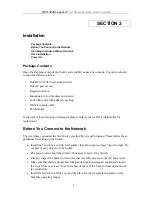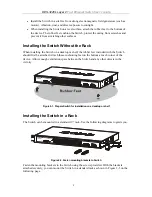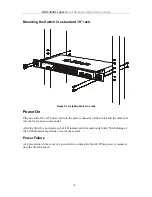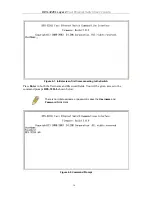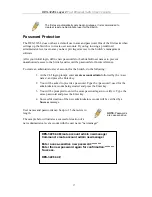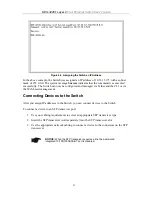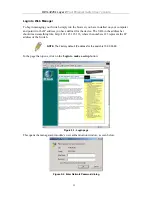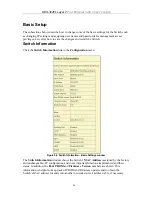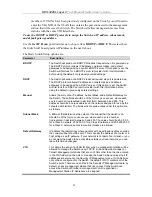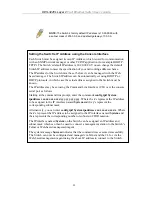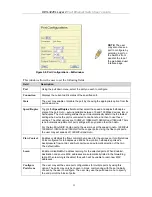
DES-3226L Layer 2
Fast Ethernet Switch User’s Guide
encrypted. To read more about how to configure SNMP v.3 settings for the Switch read the
section entitled
Management
.
Traps
Traps are messages that alert network personnel of events that occur on the Switch. The
events can be as serious as a reboot (someone accidentally turned OFF the Switch), or less
serious like a port status change. The Switch generates traps and sends them to the trap
recipient (or network manager). Typical traps include trap messages for Authentication
Failure, Topology Change and Broadcast\Multicast Storm.
MIBs
Management and counter information are stored by the Switch in the Management
Information Base (MIB). The Switch uses the standard MIB-II Management Information Base
module. Consequently, values for MIB objects can be retrieved from any SNMP-based
network management software. In addition to the standard MIB-II, the Switch also supports
its own proprietary enterprise MIB as an extended Management Information Base. The
proprietary MIB may also be retrieved by specifying the MIB Object Identifier. MIB values
can be either read-only or read-write.
IP Address Assignment
Each Switch must be assigned its own IP Address, which is used for communication with an
SNMP network manager or other TCP/IP application (for example BOOTP, TFTP). The
Switch’s default IP address is 10.90.90.90. You can change the default Switch IP address to
meet the specification of your networking address scheme.
The Switch is also assigned a unique MAC address by the factory. This MAC address cannot
be changed, and can be found by entering the command “show switch” into the command line
interface, as shown below.
19




